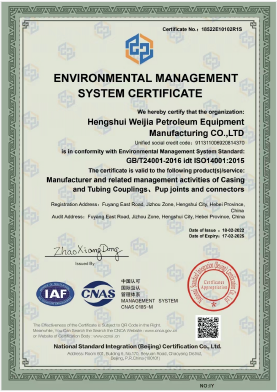- Afrikaans
- Albanian
- Amharic
- Arabic
- Armenian
- Azerbaijani
- Basque
- Belarusian
- Bengali
- Bosnian
- Bulgarian
- Catalan
- Cebuano
- Corsican
- Croatian
- Czech
- Danish
- Dutch
- English
- Esperanto
- Estonian
- Finnish
- French
- Frisian
- Galician
- Georgian
- German
- Greek
- Gujarati
- Haitian Creole
- hausa
- hawaiian
- Hebrew
- Hindi
- Miao
- Hungarian
- Icelandic
- igbo
- Indonesian
- irish
- Italian
- Japanese
- Javanese
- Kannada
- kazakh
- Khmer
- Rwandese
- Korean
- Kurdish
- Kyrgyz
- Lao
- Latin
- Latvian
- Lithuanian
- Luxembourgish
- Macedonian
- Malgashi
- Malay
- Malayalam
- Maltese
- Maori
- Marathi
- Mongolian
- Myanmar
- Nepali
- Norwegian
- Norwegian
- Occitan
- Pashto
- Persian
- Polish
- Portuguese
- Punjabi
- Romanian
- Russian
- Samoan
- Scottish Gaelic
- Serbian
- Sesotho
- Shona
- Sindhi
- Sinhala
- Slovak
- Slovenian
- Somali
- Spanish
- Sundanese
- Swahili
- Swedish
- Tagalog
- Tajik
- Tamil
- Tatar
- Telugu
- Thai
- Turkish
- Turkmen
- Ukrainian
- Urdu
- Uighur
- Uzbek
- Vietnamese
- Welsh
- Bantu
- Yiddish
- Yoruba
- Zulu
coupling tube fitting
Understanding Coupling Tube Fittings An Essential Component in Piping Systems
In the world of industrial piping and plumbing, coupling tube fittings play a critical role in connecting two sections of tubing or pipe. These fittings are designed to allow for the efficient flow of fluids or gases, while maintaining the integrity and safety of the system. This article will delve into the importance, types, and applications of coupling tube fittings, providing a comprehensive overview of this essential component.
What Are Coupling Tube Fittings?
Coupling tube fittings are mechanical devices that join two or more pipes or tubes together. They can be used to create a straight line connection, allowing for the seamless transfer of liquids and gases. Designed to withstand high pressure and temperature variations, coupling tube fittings are typically made from durable materials such as stainless steel, brass, and plastic. These materials are chosen for their resistance to corrosion, wear, and chemical compatibility, ensuring longevity and reliability in a variety of applications.
Importance in Piping Systems
Coupling tube fittings are crucial in ensuring the safety and efficiency of piping systems. They provide a secure connection that prevents leaks, which can lead to loss of valuable resources, environmental hazards, and safety risks. When properly selected and installed, these fittings can handle the intense conditions often present in industrial settings, including high pressures and varying temperatures.
Additionally, coupling tube fittings facilitate easy maintenance and repair of piping systems. If a section of the pipe needs to be replaced or inspected, these fittings can often be disconnected without the need for extensive rework, saving time and reducing the costs associated with system downtime.
Types of Coupling Tube Fittings
There are several types of coupling tube fittings, each designed for specific applications and requirements. The most common types include
1. Simple Couplings These are the most basic type, designed to connect two straight lengths of tubing. They are usually threaded or slip-on types and are effective for low-pressure applications.
coupling tube fitting

3. Union Couplings These fittings can easily disconnect the pipe segments, making them ideal for systems that require frequent maintenance or modification. They create a tight seal while allowing for disassembly without tools.
4. Compression Couplings These utilize a compressive force to secure the connection between tubes, providing a strong seal suitable for various fluid transport applications.
5. Welded Couplings These are permanently attached through welding, offering a robust and leak-proof connection essential for high-pressure environments.
Applications of Coupling Tube Fittings
The applications of coupling tube fittings span across various industries, including manufacturing, automotive, aerospace, pharmaceuticals, and more. Some common uses include
- Fluid Transport In various industries, coupling tube fittings are used to connect pipes responsible for transporting liquids. Ensuring a reliable connection is pivotal for operational efficiency.
- Hydraulic Systems In hydraulic applications, these fittings ensure the safe transfer of hydraulic fluids under high pressure, essential for machinery performance.
- Gas Distribution Coupling fittings are employed in natural gas and industrial gas lines, where secure connections are vital to prevent leaks and ensure safe operation.
- Process Industries In chemical processing and pharmaceuticals, coupling tube fittings are used to connect pipelines that transport reactive or hazardous substances, requiring high-quality materials that can withstand harsh environments.
Conclusion
In conclusion, coupling tube fittings are indispensable components in modern piping systems. Their ability to ensure secure, efficient, and safe connections between pipelines is vital across numerous industries. Understanding the different types of coupling tube fittings and their applications can help businesses make informed decisions, ultimately enhancing system performance and reliability. As technology advances, the development of more efficient and durable materials and designs will continue to improve the effectiveness of these essential components in piping systems worldwide.
-
Well Casing Extension Couplings – Applications and InstallationNewsJun.06,2025
-
Types of Crossover Subs in Drilling & CompletionNewsJun.06,2025
-
Key Features of High-Quality Tubing Pup JointsNewsJun.06,2025
-
Installation and Maintenance Tips for Steel Couplings for PipeNewsJun.06,2025
-
How to Select the Right Pup Joint for Oil & Gas OperationsNewsJun.06,2025
-
Applications of Stainless Steel Pipe CouplingsNewsJun.06,2025







